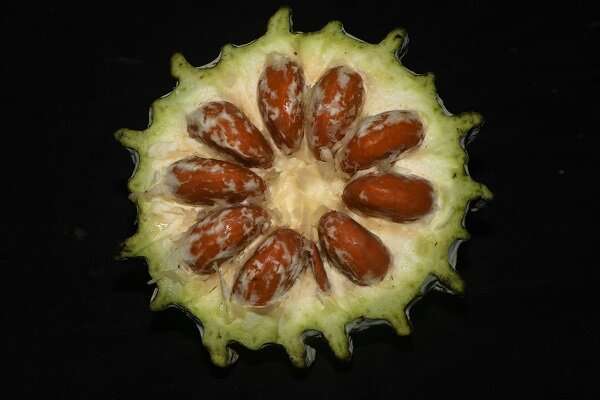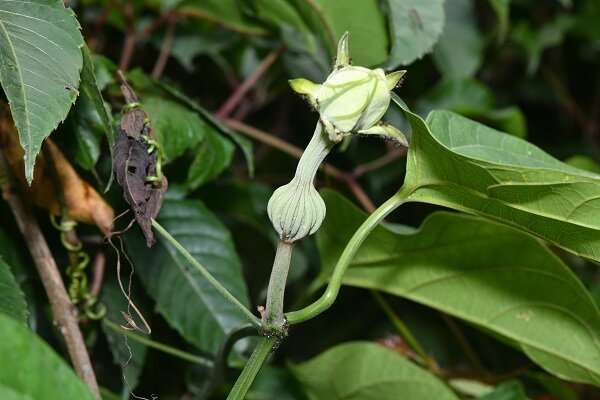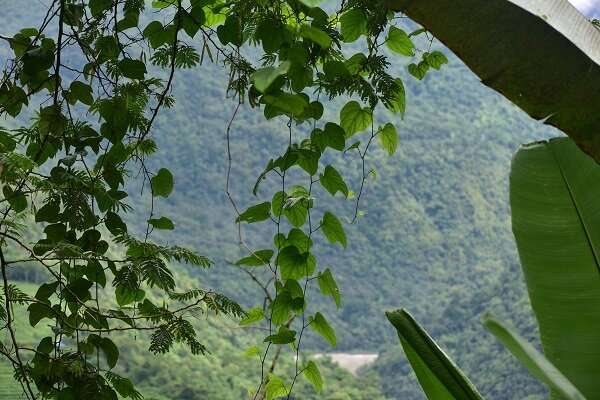Hodgsonia tsai. Credit: Shen Jianyong
Hodgsonia is a small genus of fruit-bearing vines in the family Cucurbitaceae. It consists of only two species, Hodgsonia heteroclita and Hodgsonia macrocarpa. Prof. Cai Citao, founder of the Xishuangbanna Tropical Botanical Garden (XTBG) of the Chinese Academy of Sciences, studied H. macrocarpa in early 1960s and found pyrenes with three of four seeds, which is even more complicated.
During field work in the second Tibetan Plateau Scientific Expedition and Research, XTBG researchers found some fruit materials similar to Hodgsonia in Motuo County. They then found male and female flowers together with the mature fruits. Their features are completely different from the other two species. Through the morphological comparison of the other two species, they finally confirmed that this species is new to science.
The new species is named Hodgsonia tsai in honor of Prof. Cai Xitao (or Hse-Tao Tsai) and is published in Taiwania.
Hodgsonia tsai is a liana up to 30 meters. It can be distinguished from its congeners by several morphological features. H. tsaii has 10–20 mm long calyx lobes. Its pericarp has 20 grooves, separated by 10 tall ribs and 10 dwarf ribs. Its ovary is with five carpels and 10 separate ovules, and five-lobed stigma.
This species often grows along forest edges, occasionally in the forest, at an elevation of 600–1450 meters. Currently only about 100 individuals were observed in Motuo County.
Since this new species is also distributed in Putao in northern Myanmar, it is possible that this species has a relatively wide distribution range. Due to insufficient field investigation, the natural distribution of this species in the wild is not clear. The researchers assessed the conservation status of the new species as Data Deficient.
-
Hodgsonia tsai. Credit: Shen Jianyong
-
Hodgsonia tsai. Credit: Shen Jianyong
More information: Jian-Yong Shen, Xing-Da Ma, Wen-Guang Wang, Bo Pan, Hodgsonia tsaii (Cucurbitaceae), a new species from Xizang, China, Taiwania (2022). DOI: 10.6165/tai.2022.67.465. taiwania.ntu.edu.tw/abstract/1864
Provided by Chinese Academy of Sciences

























